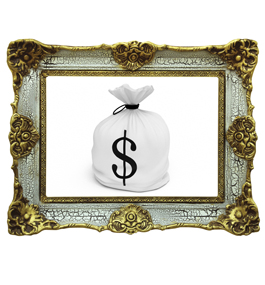Measuring a Masterpiece

by Samantha Mocle
Is art a good investment? Depends on what kind of return you expect, says Kathryn Graddy, a professor in the economics department and at Brandeis International Business School, who researches how auction pricing affects the value of art.
Graddy first delved into the world of art pricing and auctions as a postdoc at the University of Oxford. She spent a month at Christie’s in London examining auction prices of contemporary art to better understand the meaning behind the figures. As a result, she was able to create one of the fi rst datasets related to art pricing and sales.
Last semester, she analyzed the correlations among psychology, creativity and auction activity — for instance, whether the death of a close friend or a relative increases or decreases an artist’s creativity as measured by the auction price of his or her work.
Graddy offers one example of this correlation: “Many historians speculate that the suicide of Pablo Picasso’s friend Carlos Casagemas led to Picasso’s Blue Period, producing somber works that have achieved record prices at auction.”
Yet Graddy’s preliminary conclusions don’t support the view that you must suffer to create great art. Examining a sample of French impressionist and early-20th-century American abstract artists, she found that in the two years following the death of a loved one, the value of an artist’s painting decreased by 30 percent relative to paintings produced during other times in the artist’s life.
Though financial markets certainly affect auction-market activity (things were quiet at Sotheby’s and Christie’s during the 2008 recession), economic distress doesn’t always lead to trouble in the art industry, says Graddy. Art and other collateralizable assets, like old Italian violins, are viewed by some as a strong alternative investment to stocks.
“Personally, I would not invest in art for profit alone,” Graddy says. “But, though the monetary return can be lower than what you get from stocks, some would argue that art is more valuable, because it can be enjoyed from a cultural perspective. Owning art pays dividends in the form of enjoyment.”
